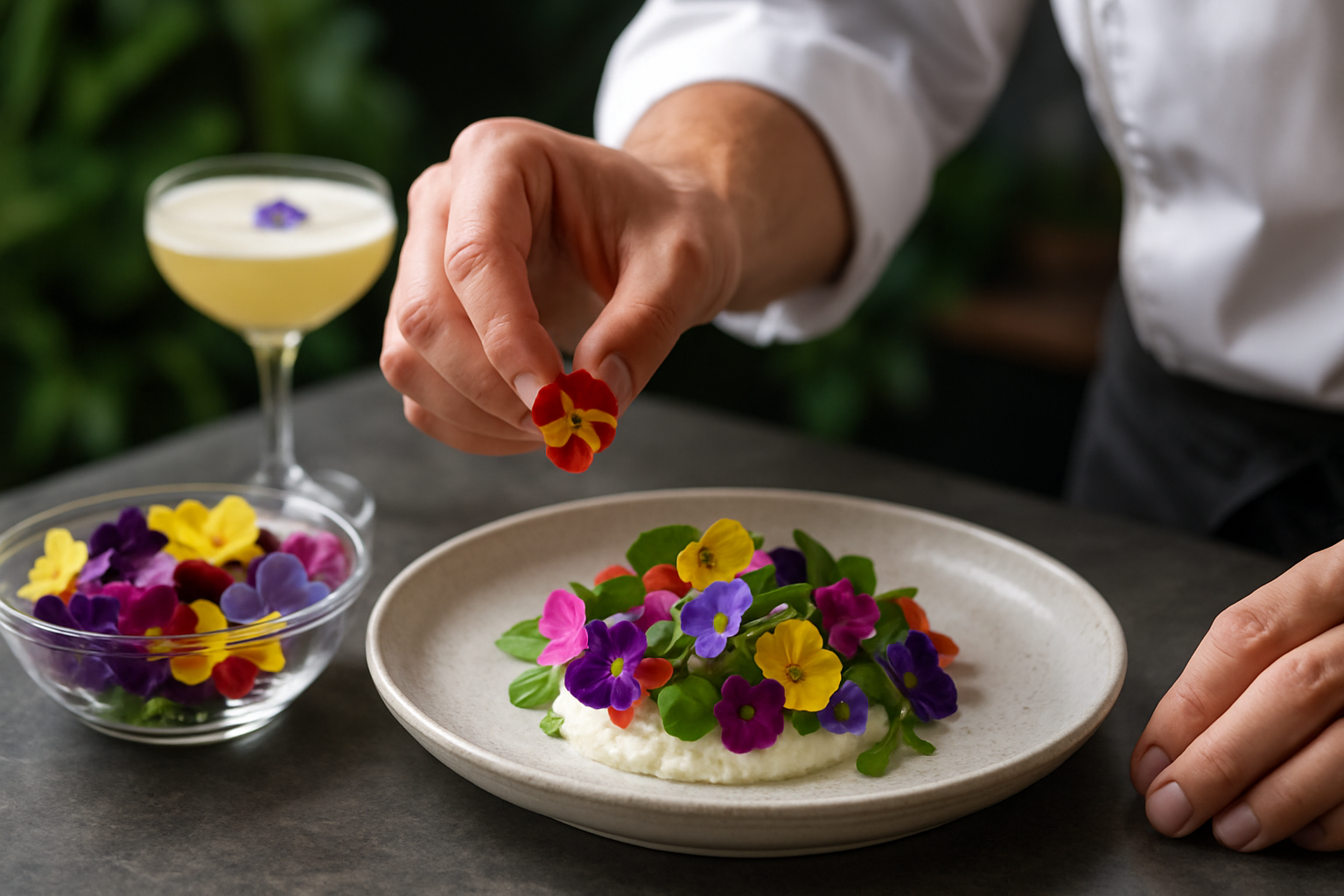Culinary Alchemy: Edible Flowers Bloom in Modern Gastronomy
Petals on plates are no longer just for show. The culinary world is embracing edible flowers as more than mere garnishes, transforming them into star ingredients that tantalize taste buds and elevate dishes with their unique flavors and textures. From cocktails to desserts, these botanical beauties are blossoming in kitchens worldwide, adding a touch of nature's artistry to the plate.

From Garden to Glass: Floral Cocktails Bloom
The mixology world has fully embraced the floral trend, with bartenders crafting cocktails that are as visually stunning as they are flavorful. Elderflower liqueurs have become a staple behind many bars, while hibiscus-infused spirits add a vibrant hue and tart flavor to drinks. Creative mixologists are going further, experimenting with flower-infused ice cubes that slowly release their essence as they melt, or creating aromatic garnishes from edible petals. These floral concoctions aren’t just about aesthetics; they’re about creating complex flavor profiles that evolve with each sip. From chamomile-spiked gin and tonics to rose petal martinis, these botanical beverages are redefining what we expect from our cocktails, offering a garden in a glass.
The Health Halo of Edible Flowers
As consumers become more health-conscious, the nutritional benefits of edible flowers are coming into focus. Many edible blooms are packed with antioxidants, vitamins, and minerals, making them not just beautiful but also functional ingredients. Calendula, for instance, is known for its anti-inflammatory properties, while roses are rich in vitamin C. This health halo is driving the incorporation of edible flowers into everything from salads to smoothies. Health food cafes are sprinkling flower petals over açai bowls, while wellness-focused chefs are creating immunity-boosting teas with chrysanthemum and jasmine. The intersection of nutrition and flavor is creating a new category of functional foods that appeal to both the health-conscious and the epicurious.
Cultivating a New Market: The Rise of Edible Flower Farming
The growing demand for edible flowers has sparked a niche in agriculture. Specialized farms are cropping up, dedicated to growing a wide variety of edible blooms. These farms are not just supplying restaurants; they’re also catering to home cooks eager to experiment with floral ingredients. The challenge of cultivating these delicate crops has led to innovations in farming techniques, including hydroponic systems designed specifically for edible flowers. This burgeoning industry is creating new opportunities for small-scale farmers and urban agriculturists. As the market expands, we’re seeing an increase in the variety of edible flowers available, from common marigolds to exotic orchids, each offering its unique flavor profile and culinary potential.
DIY Floral Gastronomy: Bringing Blooms to Home Kitchens
The edible flower trend is not confined to professional kitchens. Home cooks are increasingly incorporating these botanical ingredients into their culinary repertoire. Social media platforms are awash with images of homemade floral ice cubes, lavender-infused honey, and pansy-topped cakes. This DIY approach to floral gastronomy is empowering home chefs to experiment with new flavors and presentation techniques. Cookbooks dedicated to cooking with flowers are hitting the shelves, offering recipes and guidance on how to safely and effectively use edible blooms. From candied violets to rose petal jam, these homemade creations are allowing people to add a personal and artistic touch to their cooking, transforming everyday meals into Instagram-worthy creations.
Petal Power: Tips for Cooking with Edible Flowers
-
Always ensure flowers are pesticide-free and properly identified as edible
-
Start with small quantities to test flavors and potential allergies
-
Harvest flowers in the morning when their water content is highest
-
Gently wash flowers and pat dry before use
-
Remove stamens and pistils before eating to avoid bitterness
-
Experiment with different preparation methods: raw, cooked, candied, or infused
-
Store edible flowers in the refrigerator between damp paper towels for longevity
The integration of edible flowers into modern gastronomy represents more than just a passing trend. It’s a return to nature, a celebration of biodiversity, and a testament to the endless creativity of chefs and food enthusiasts. As we continue to explore the culinary potential of these botanical wonders, we’re not just adding color to our plates; we’re cultivating a deeper appreciation for the intricate flavors that nature provides. The edible flower movement is blooming, and it’s inviting us all to stop and taste the roses – quite literally.





